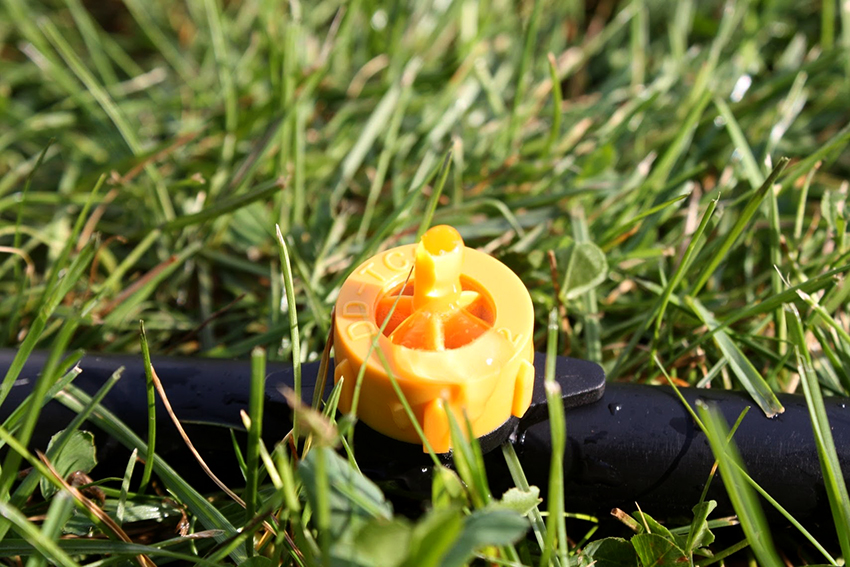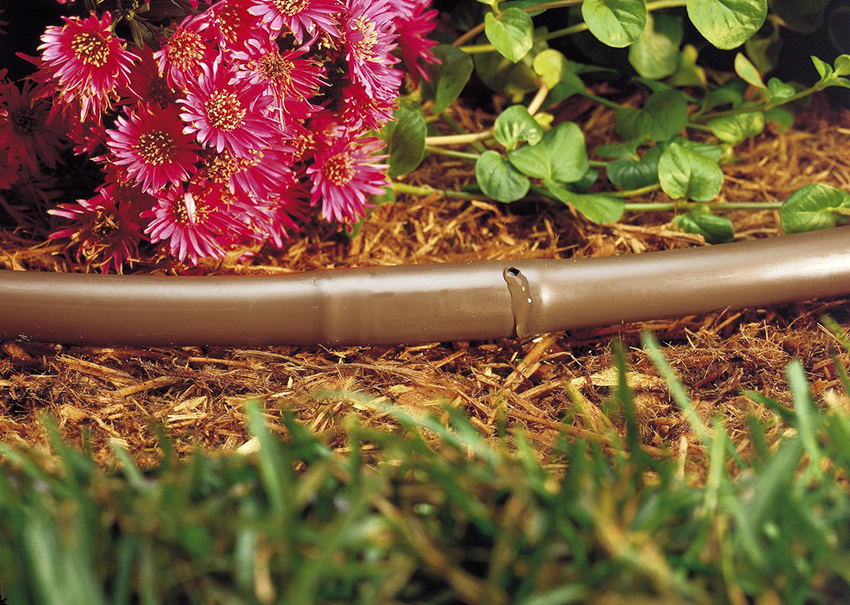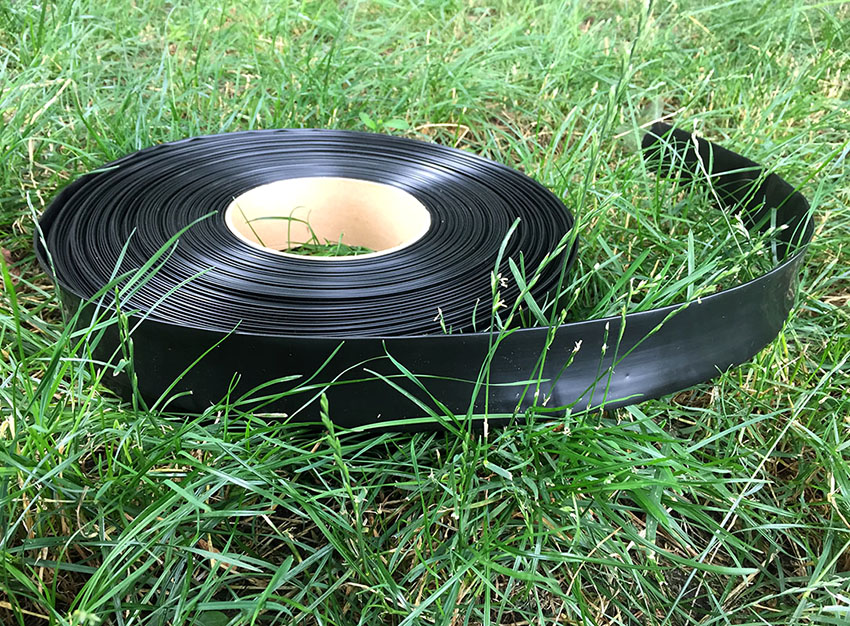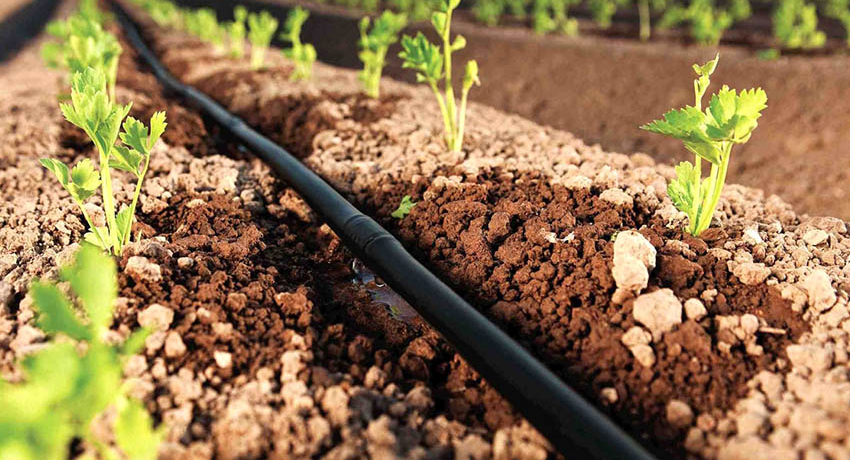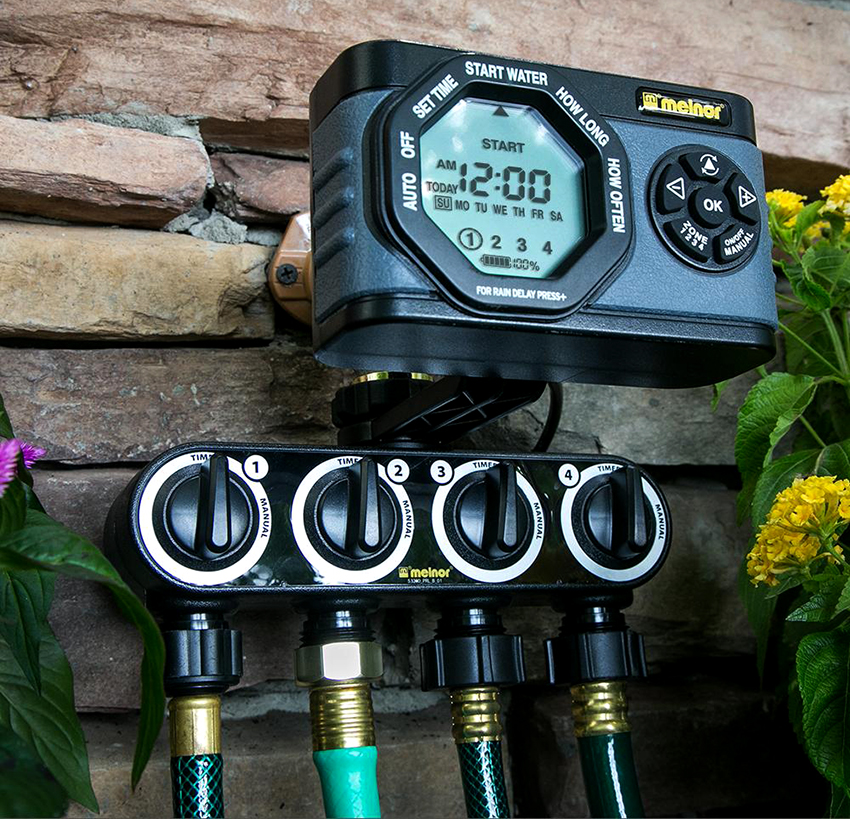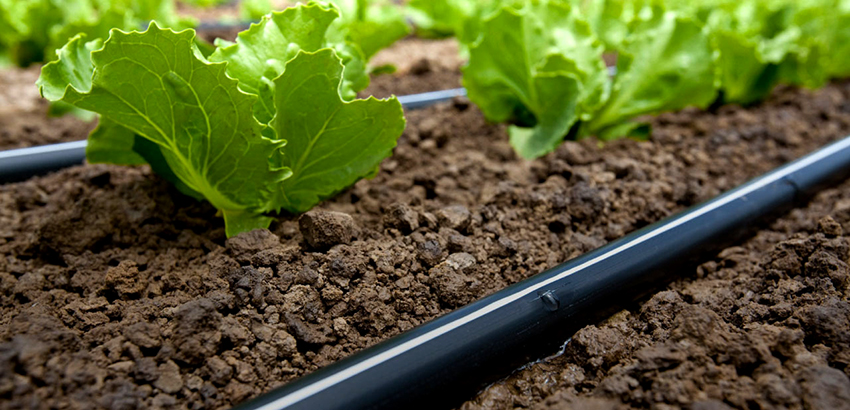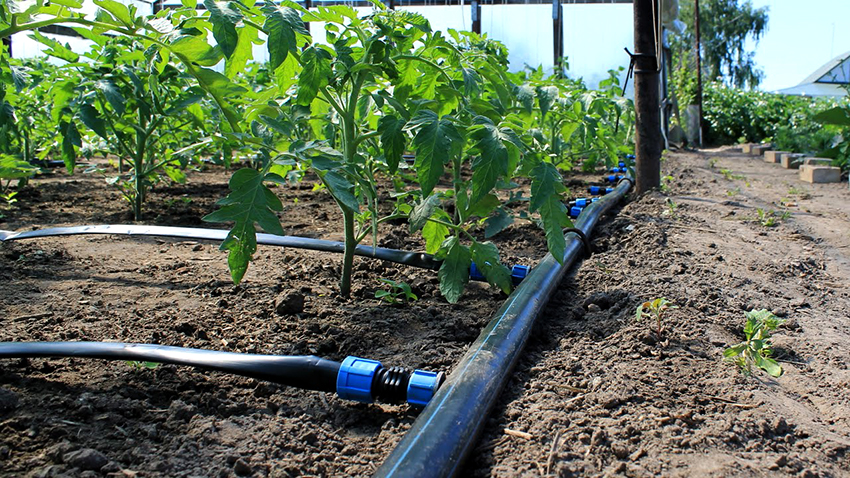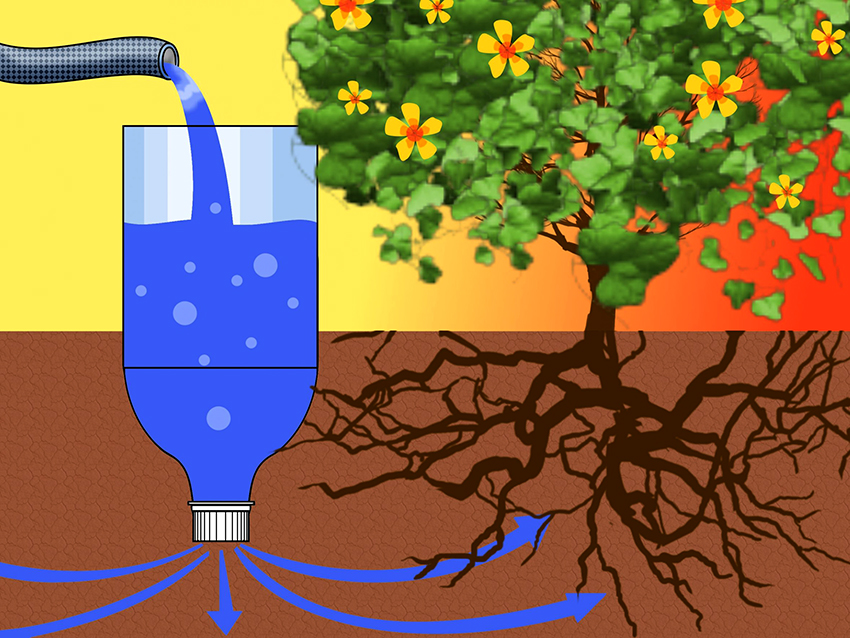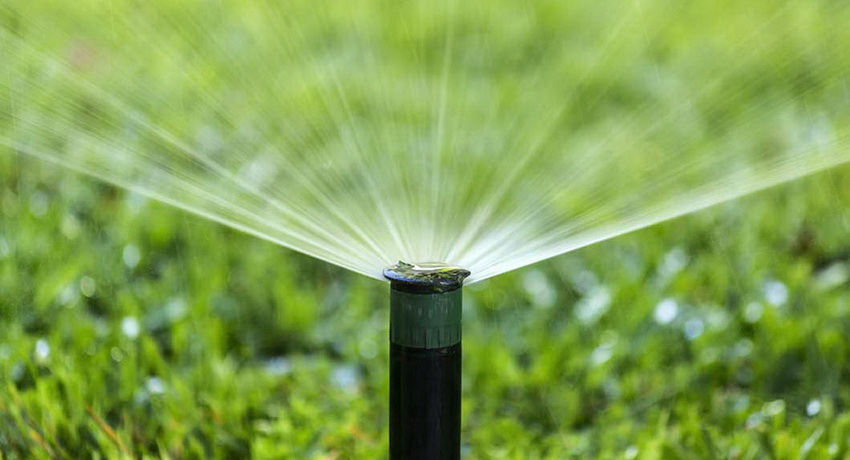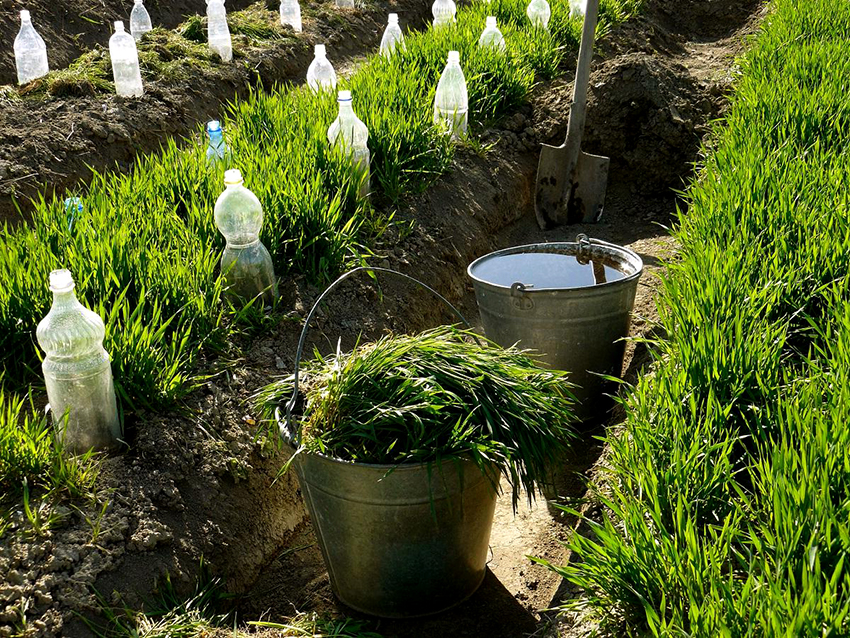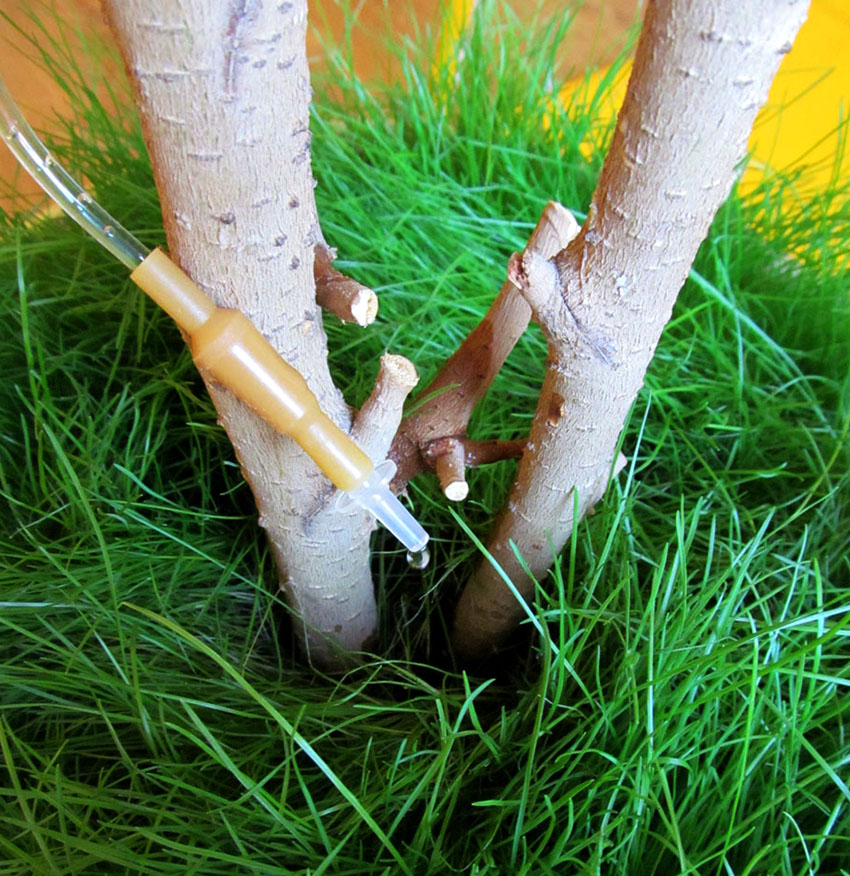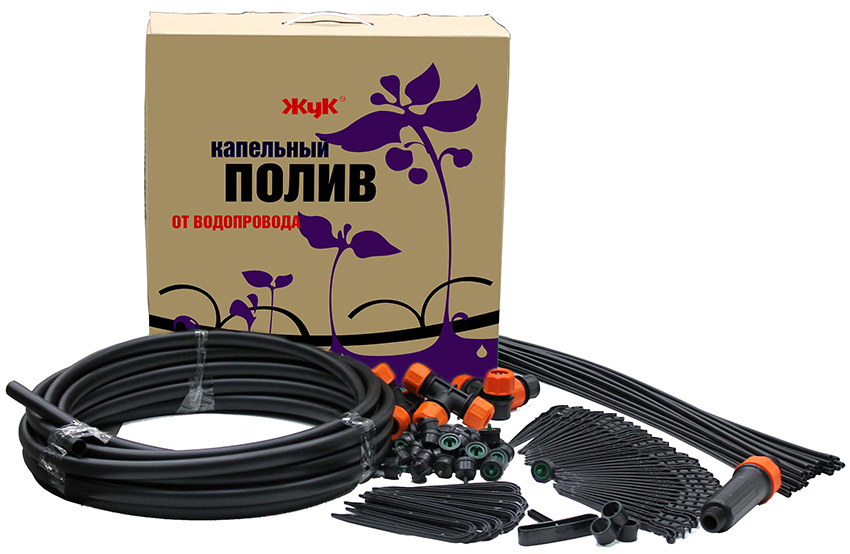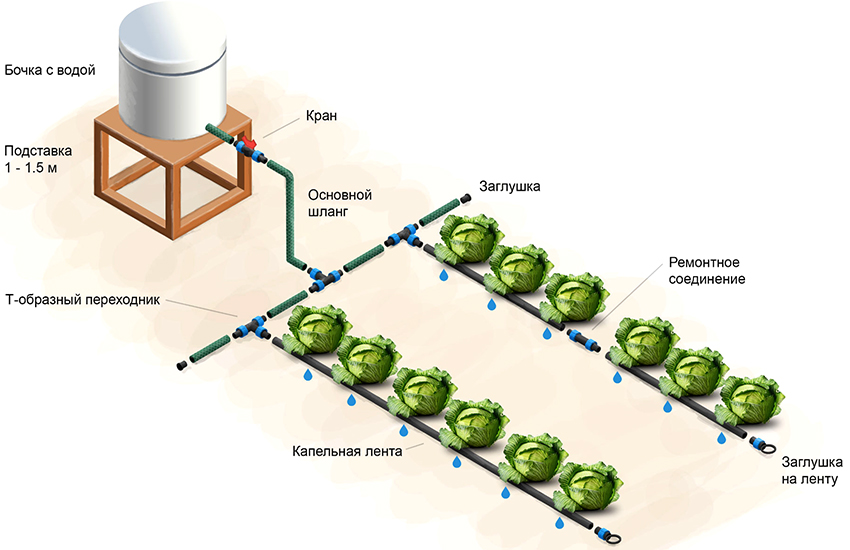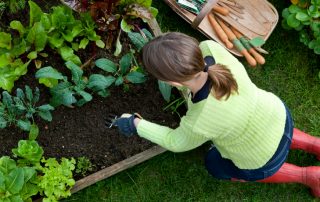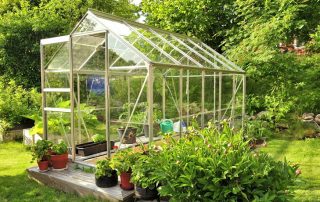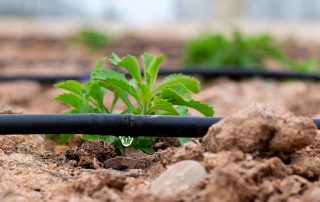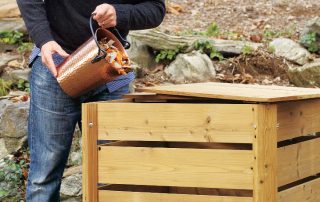Today, the most popular irrigation option at a summer cottage is drip irrigation. Water gets directly under the roots of the plants, so this system saves on water consumption, facilitates labor-intensive irrigation and increases yields. This irrigation option can be purchased as a ready-made kit or you can do it yourself. Do-it-yourself drip irrigation for a summer residence without costs: do it yourself a system from scrap materials.
Content
- 1 What is drip irrigation: a feature of the irrigation system
- 2 Irrigation system components and their characteristics
- 3 How to do drip irrigation with your own hands from plastic pipes and hoses
- 4 Drip irrigation from plastic bottles: features of the irrigation option
- 5 DIY methods of organizing drip irrigation from plastic bottles
- 6 Do-it-yourself drip irrigation for a summer residence without costs: do it yourself from medical droppers
- 7 Overview of ready-made drip irrigation systems, their characteristics
- 8 Do-it-yourself drip irrigation in the country: video plot
What is drip irrigation: a feature of the irrigation system
Drip irrigation is a system of regular and uniform provision of moisture to the root system of plants, which helps to moisten the soil directly under the plantation. Such irrigation can significantly save water. The soil is not excessively waterlogged and does not swamp between rows, as is the case with other water supply options. This promotes the active supply of oxygen to the root system, which has a beneficial effect on plant growth, thereby increasing yields.
The drip irrigation system reduces the labor intensity of caring for green crops. And with an automated process, you can leave the site unattended for several days without worrying about the plants being left without water.
The complete set can be very diverse. But the structure of any system includes main pipelines for the supply and distribution of water and branch branches that supply water directly to the root system of each green plantation. The system is connected to a centralized water supply system, a storage tank (gravity version) or to a pumping station. It can be equipped with automatic equipment, sometimes its control is carried out manually. System components are selected depending on these criteria.
Irrigation system components and their characteristics
The main element of the system is the source of water supply. It can be represented by a water supply system, a well or a water-measuring tank, which is installed at a height of at least 1.5 m. The next required element is a do-it-yourself drip irrigation filter, thanks to which the system will not be clogged with various small debris.
The device can be vortex, disc or mesh. The latter option is considered more popular due to its low cost. The vortex filter is used for irrigation systems for large areas. The disc element is characterized by excellent performance and high cost, which is not at all justified for small suburban areas.
If the source of water supply is a well or a well, the system must be completed with a pump unit. The most appropriate option is the centrifugal type of device. The do-it-yourself drip irrigation distribution network consists of pipelines and hoses. For the main trunk network, metal or plastic pipes can be used. Metal products are durable, reliable and durable. However, the material corrodes, resulting in system damage.
Polyethylene or polypropylene piping is more acceptable. The products are characterized by strength, smooth inner wall, which eliminates the possibility of deposits forming inside the system. Plastic pipes are able to withstand temperature fluctuations and the negative effects of aggressive substances.
DIY drip tapes for irrigation system
To organize taps to each row, drip tapes in the form of a flat thin-walled tube are mainly used when arranging an irrigation system with their own hands, in which special devices for water supply are built inside. The belt is designed for pressures up to 1 bar. If it is enlarged, the product may burst. The maximum belt length is 100 m.
Buy drip tape can be slotted or emitter. In the first version, a labyrinth is located along the entire length of the product, which distributes water evenly. At certain distances, it has holes for water outlet. This type of belt is prone to clogging and therefore requires a good filter.
Inside the emitter tape are flat droppers equipped with a labyrinth system, thanks to which water is supplied to the plants. Emitters can be located at different distances in the range of 10-35 cm, depending on the type of crops watered. The lower this value, the higher the cost of the product. Emitter tape is more reliable than slotted tape, and this affects the cost of the product.
When choosing a tape, you should pay attention to its thickness, which affects the strength and durability of the product. The thinnest element will last no more than one season and is only suitable for greenhouses.
Features of using drip tubes with external drippers
The drip tube is made of HDPE and is tough and durable. It is produced without holes and is designed for self-assembly of external drippers. The wall thickness of the product is 0.9-1.2 mm. The material is resistant to UV rays. The drip tube is capable of withstanding pressures up to 6 bar.
External drippers are used when organizing drip irrigation at the dacha individually for each plant. To ensure the normal operation of the system, it is necessary to have a high pressure in the network. These devices can be connected through thin hoses or connected directly to the drip pipe.
There are several types of external droppers. Compensated are used for uniform irrigation with very long drip tape, as well as in areas with a slope. They work exclusively from a pressure system. Less prone to small debris contamination. Uncompensated devices are used with a short drip pipe length and on flat areas. This option is used for gravity systems from a container. They can function at low network pressure. There are also pegs that are used for spot irrigation. The product is installed in the root zone of the planting.
Helpful advice! For drip irrigation of tomatoes, cucumbers, eggplants and peppers, it is advisable to use drip tubes with external droppers.
The advantage of such pipes is that you can independently choose the installation step and regulate the volume of the released water. The disadvantages include the high cost of the product (in comparison with drip tapes), laborious and lengthy process of cleaning the droppers.
How to choose the right drip timers
When arranging drip irrigation, set a timer. It performs the following functions:
- manages the irrigation system;
- controls the operation of the pump motor;
- starts and stops the water supply;
- ensures the operation of several lines at the same time.
The timer is battery operated. When you change them, all programs on it are saved. The device may be equipped with the function meter for water... A distinction is made between mechanical and electronic timers. The first option works on a spring, providing continuous watering for up to 24 hours. The mode correction is made manually. Any action cannot be programmed indefinitely. Such a device can be used for small areas where the irrigation process is constantly monitored by the owner.
An electronic timer allows you to program the process. The device has mechanical or software control. The first option is set for one week with a watering duration of no more than 2 hours. An innovative device is a program-controlled timer with 16 commands. It can be used to irrigate crops with different irrigation regimes. The equipment is equipped with an air humidity sensor. Such an expensive option (in comparison with other devices) is recommended to be installed for irrigation of large areas, as well as in greenhouses.
If the system is connected to a centralized water conduit or pump, a device with a solenoid valve should be chosen, and for irrigation from a barrel by gravity - with a ball valve.
How to do drip irrigation with your own hands from plastic pipes and hoses
When arranging a drip irrigation system from ready-made components, it is necessary to opt only for high-quality products so that it will serve for many years and the money is not wasted. The irrigation scheme should be fairly simple, with a minimum number of connectors. At the junctions of the elements, the pressure weakens, which contributes to the accumulation of small particles of debris.
The installation of the system is preceded by the creation of a layout of all its constituent elements, and this, in turn, depends on the layout of the site and the location of the beds. The diagram should indicate the source of water supply, the main pipe and the outlet hoses so that you can calculate the amount of materials required. It is better to use a plastic barrel as a source of water supply for drip irrigation. This material does not corrode, which will not only increase the service life of the product, but also eliminate the possibility of clogging the system with rust particles.
A main pipeline is connected to the water supply source, which can be made of metal or plastic. A more preferable option is to do it yourself from polypropylene drip irrigation pipes. The main branch is perpendicular to the beds and has a larger diameter than the branch pipes. All elements of drip irrigation with their own hands from plastic pipes are connected with compression fittings. After the stopcock of the water supply source, a coarse filter is installed on the line.
If drip tapes are used as branch lines, then holes are drilled in the line to secure them with starter fittings. The hoses are placed as close to the plant line as possible. A plug is installed at the end of each tape. Then the system is checked for operability.
If an underground installation of the system is planned, it is necessary to dig a trench 30-70 cm deep under the pipelines. It is necessary to fill the bottom with a layer of rubble and lay the assembled system. Next, it is tested, after which it is backfilled with soil. You can study the installation process in detail on the video of drip irrigation in the country.
Important! Drip irrigation lines laid underground are highly susceptible to clogging.
Drip irrigation from plastic bottles: features of the irrigation option
Plastic bottles and canisters can be used to make not only decorative elements for ennobling the territory. Of these, a full-fledged drip irrigation system is organized at the summer cottage, which allows the soil to be moistened for 3-4 days.
Based on numerous reviews, it is advisable to make drip irrigation from plastic bottles from containers with a volume of up to 2.5 liters. Soil saturation of water depends on the type of soil, this determines the number of holes in the container, due to which sufficient moisture will be provided, which will exclude the possibility of overflow or underfilling. For example, sandy soils absorb moisture well. In this case, 1-2 holes in the bottle will be sufficient, and for heavy soils, a larger number should be provided. With bottles of 1 liter, drip irrigation of cucumbers and tomatoes is provided for 4-5 days, 3 liters for 10 days, 6 liters for 14-15 days.
It is advisable to organize drip irrigation with the help of plastic containers in small areas. For large areas, it will take too much time and effort to refill the container with water.
Helpful advice! The plastic system can be used to feed and fertilize various crops.
The main advantages of creating drip irrigation from plastic containers:
- significant water savings;
- minimum financial costs for organizing the system;
- an individual approach to each green space;
- easy installation, operation and maintenance;
- targeted intake of moisture and feeding.
Related article:
Watering system in the country: a variety of options for irrigating plants
The choice of pipe material for the organization of irrigation and irrigation. Key points of installing the system with your own hands.
The following positions can be distinguished from the shortcomings of the system:
- frequent clogging of the system due to the inability to install a filter;
- unaesthetic appearance of the site;
- constant replenishment of the water supply manually;
- on hot days of hot summer, the plastic system may not cope with the full water supply of plants.
Helpful advice! You can create a filter for each bottle by using nylon tights.
DIY methods of organizing drip irrigation from plastic bottles
There are several ways to create drip irrigation from plastic containers. The system can carry out surface and subsurface irrigation.
Underground homemade drip irrigation of roots using plastic bottles can be done in several ways. The most popular option is to dig in containers between adjacent bushes to a depth of 10-15 cm, bottom down. Along the entire bottle, before narrowing it to the neck, it should be made using a gypsy needle or sewing holes, stepping back 3 cm from the bottom of the container. The number of holes is on average 10-12 pcs. for containers of 2 liters. A container wrapped in a thin cloth is dug into a previously prepared hole, filled with water and closed with a lid.
As the container is emptied, which occurs under the pressure of the earth, it can deform. To avoid this, a pressure equalization hole must be punctured in the cover and the water supply must be replenished in a timely manner.
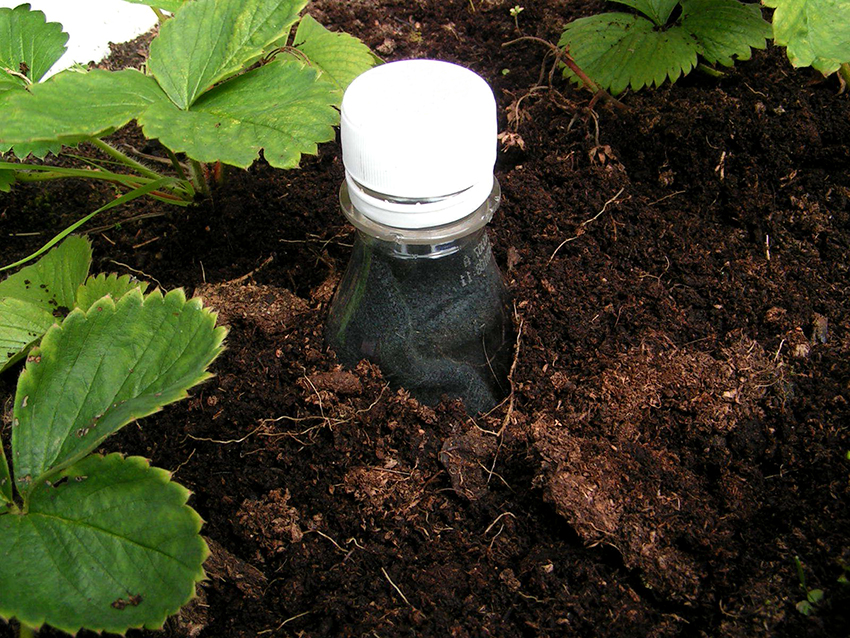
The most popular option for irrigation from a plastic bottle is dropping the container between the plants.
Another similar option is the arrangement of the container with the lid down. For this method, you need to cut off the bottom of the bottle and screw the cap onto the neck. Throughout the entire area of the container, holes are made, not reaching the top by 2-3 cm. The bottle, previously wrapped with gauze, is placed in the hole and filled with water. To prevent debris from getting into the water, the container is covered from above with a previously cut bottom.
Do-it-yourself subsoil drip irrigation for summer cottages can be organized using special oblong-shaped nozzles with holes. They can be bought in specialized stores for summer residents and gardeners. The nozzle is screwed onto the container neck instead of the lid. In this case, bottles with a capacity of up to 2.5 liters should be used, since there are no such devices for containers of 5-6 liters. The bottle is inserted with the neck down into the ground to the depth of the nozzle. The bottom of the container need not be cut off. After emptying the container, the tip is unscrewed, it is filled with water, and the manipulation is repeated.
Do-it-yourself root and surface drip watering from bottles
With the help of plastic containers, you can carry out root drip irrigation of the garden by directing drops of water directly under the root of each plant. For this method, it is better to choose a container with a volume of 1.5 liters. A hole is made in the central part of the cover with a nail. Next, you should cut the bottom of the bottle at an angle of 30-40 degrees. The container itself will be located at the same slope relative to the ground. The container is secured with several sticks and tape as close to the bush as possible, tilting the neck so that water gets directly under the rhizome.
Another option, which is often used in a greenhouse, involves watering the plant at some distance. To do this, you should take a container of small volume and a regular ballpoint pen core, previously cleaned of paste residues with gasoline or solvent. One end of it is tightly closed with a toothpick or a match. Another is inserted into the opening of the bottle. It is better to seal the junction with plasticine.
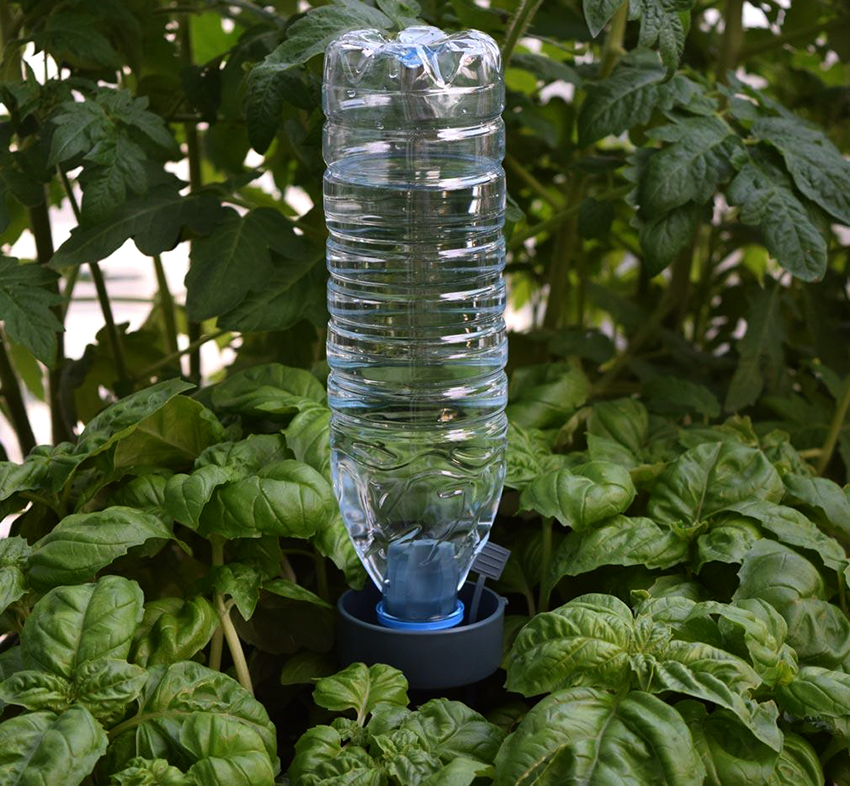
Drip irrigation from plastic bottles can be root and surface
It is necessary to make holes in the rod, the number and size of which will depend on the required moisture intensity. It is directed to the root of the plant, depending on which the bottle is dug into the ground to the desired depth. The container is filled with water and closed with a lid.
A suspension system can be made for a small area. To do this, a support is erected over the bushes, a metal rod or wire is pulled, to which the bottles will be suspended. A number of small holes should be made in the bottom or lid of the container, depending on the variant of its location.The main advantage of this method is that the water will flow to the plant warm due to the fact that it heats up under the influence of the sun.
The container is hung over the garden bed at a height of 30-50 cm from ground level. The location of the bottle should be chosen based on the optimal drop of drops under the plant, and not on its leaves.
Useful advice! Do not make many holes at once. They can be added as needed to increase water intake.
Do-it-yourself drip irrigation for a summer residence at no cost: do it yourself from medical droppers
Another economical option is the installation of a drip irrigation system from medical droppers. It is rational to arrange it in areas with various crops, which should be watered in different quantities. Such a procedure becomes possible due to the fact that the droppers are equipped with special regulating wheels that allow you to select the required intensity of fluid intake. The disadvantage of this system is the fast clogging of the droppers, which requires periodic flushing.
To create a do-it-yourself drip irrigation system, you should prepare:
- medical disposable droppers;
- hoses for distribution over water beds;
- connecting and shut-off valves for drippers and hoses.
Useful advice! It is recommended to choose all components in a dark color, which will prevent water bloom in the system.
Before installing such a device, a drip irrigation scheme should be displayed on a sheet of paper, which is carried out based on the location of the beds where irrigation should be provided. Based on this, the surface distribution of the supply pipes is made at the site. For this, you can use plastic or rubber products. The connection of all elements is carried out using tees. A plug must be installed at the end of each hose.
The system can be connected from a centralized water supply system or from a storage tank located at a certain height. Also in this case you can create autowateringby setting a timer or controller at the beginning of the system. A hole is made in the distribution pipes opposite each plant, where the plastic end of the dropper is inserted. The tubules of the elements are bred for each bush.
Useful advice! In order for the drip irrigation system from medical droppers to serve as long as possible, a fine filter should be installed at the very beginning (after the water supply source).
Overview of ready-made drip irrigation systems, their characteristics
Drip irrigation system "Zhuk" from a domestic manufacturer is one of the most popular among gardeners. It can be connected to a centralized water supply or to a storage tank. If the latter option is used, the kit includes a level tube, through which you can control the amount of water remaining in the barrel. Manufacturers produce drip irrigation systems "Zhuk" for 60 plants and 30 plantings. Usually the device is equipped with a timer and a filter. You can additionally buy Beetle drip irrigation for 20 plants.
The Kaplya irrigation kits are equipped with emitter strips with a dropper pitch of 0.3 m. Due to the complex labyrinth of channels inside the dropper, the possibility of clogging is excluded. The system is designed for an area of 25 m2. It can be connected to both the water supply and the storage tank. The controller is not included in the set.
A more reliable analogue of the Zhuk irrigation system is the Vodomerka model, which is designed for drip irrigation of small greenhouses.The set consists of a 12 m hose, controller, 40 drippers and fittings. The system is organized for irrigation exclusively from the tank, since the operating pressure in the network should not exceed 1 bar. The barrel is most often located at a height of 50 m.
The Belarusian system of drip irrigation "Aquadusya" has several varieties, suitable for irrigation of areas of different sizes. It can be equipped with a controller or be without it, connected to a water supply or storage tank.
Drip irrigation "Harvest" -1 is also produced with long emitter tapes. The system can be additionally equipped with a filter and automation. Another budget option is the Tomato drip irrigation system with drip tubes, external drippers and a timer. The kit also includes special splitters to facilitate system installation. The most expensive model includes a controller and a submersible pump.
The Istok irrigation system includes a 25 m drip tube with a 30 cm spacing between the drippers. The device is equipped with a filter and fittings required to connect to a storage tank. Some models are equipped with a controller and a pump.
Today you can buy a drip irrigation system that includes all possible elements. But such a solution requires significant financial costs. A more economical option is to create such a mechanism from ready-made components. In addition, you can make yourself an irrigation system for giving from scrap materials, such as plastic bottles and medical droppers. The choice depends on the nature of the territory, its area, the number and type of green spaces, personal preferences and the financial capacity of the owner.
Do-it-yourself drip irrigation in the country: video plot

